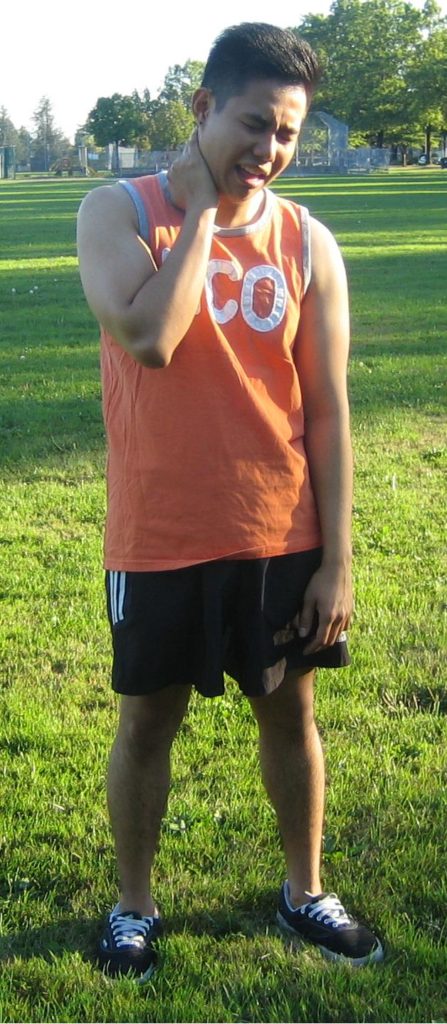Torticollis is simply called a twisted neck where it is twisted to one side. The exact cause of acute torticollis is usually unknown. It can develop without any previous neck symptoms. It is a usual cause of neck pain among young individuals and there is usually no evident injury.
Nevertheless, it might also be brought about to a trivial sprain or irritation of a ligament or muscle in the neck. Some of the likely reasons include the following:
- Sleeping or sitting in an awkward position without proper neck support
- Poor posture when using a computer
- Carrying heavy loads that are unbalanced
- Allowing some of the neck muscles to be exposed to the cold
It is also common for some individuals to go to bed feeling fine and wake up the next morning with acute torticollis.
Indications of acute torticollis

This typically develops rapidly, usually over a period of an hour or even overnight. The twisting of the neck occurs if the muscles responsible for supporting the neck on one side are painful.
The pain usually occurs on one side of the neck along with stiffness of the muscles in the area that twists the neck to one side. There is difficulty when attempting to straighten the neck due to the pain. In some cases, the pain is in the middle part of the neck.
It is important to note that the pain can radiate to the back of the head or to the shoulder. The muscles on the affected side might be tender. The pressure on certain regions might trigger muscle spasms. In addition, movement of the neck is limited especially on one side.
Management
The objective of treatment for acute torticollis is to alleviate the pain and minimize the stiffness of the muscles.
Exercise
The neck muscles should be allowed to move as normally as possible. Rest is vital during the initial phase but this should be followed by gentle exercises.
The range of neck movements should be gradually increased. If likely, continue with normal activities to prevent it from stiffening.
Medications
- Paracetamol is usually given to alleviate the pain.
- Anti-inflammatory medications such as ibuprofen, naproxen or diclofenac can be used if relief could not be provided by paracetamol. These are usually used alone or together with paracetamol.
- Codeine is a potent pain medication if anti-inflammatories are not effective.
- A muscle relaxant specifically diazepam might be prescribed by the doctor for a few days if the neck stiffness is severe.
There are also other measures that can help alleviate acute torticollis. Observing proper posture can help especially when working. A firm supporting pillow can also be used while sleeping. Additionally, the application of a heat pack can help reduce the stiffness of the muscles.

